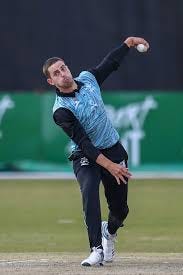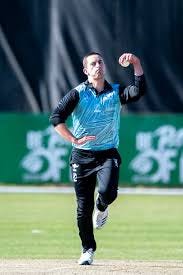Cricket used to be one of the hardest professional sports in the world in which to make a living. I’ll never tire of reminding readers that Garry Sobers earned far more playing for Rishton than he ever did representing the West Indies. He even had to be persuaded by Richie Benaud to play international cricket rather than Lancashire League.
These days however, there are more opportunities than ever before to make very good money - and in a short space of time. The world’s best cricketers are becoming financially independent within just four or five years, but the real story concerns the thousands of players in the levels below.
Decent state, county or provincial cricketers with no realistic expectation of playing international cricket, who used to rely on part-time jobs and a few coaching gigs to get by, can now circumvent that with two or three week contracts in domestic T20 tournaments around the world.
What fascinates me is how those cricketers put themselves in the frame for selection, or are put in the frame. In the early days of the IPL if you were a Victorian all rounder and mates with the great Shane Warne, you could count yourself unlucky if you didn’t find yourself in India for at least one season.
These days IPL franchises have scouts in every country which plays the game. Coaches and former players make regular recommendations and players often benefit as much from who they as what they can do. Sometimes, just being in the right place at the right time, or producing one stunning performance in front of the right audience, can change a life.
It famously happened to former Warriors all rounder, Tyron Henderson, whose ability to bowl cutters and slower balls was ahead of its time in the earliest days of T20. His nickname – “The Blacksmith” – gives you a fair idea of his strength and the rudimentary manner with which he hit the ball.
In 2008 Middlesex took a calculated gamble and signed him up. He delivered an explosive, match-winning innings of 59 to win an apparently ‘lost’ semi-final and was watched by a couple of IPL big-movers. A few months later, he found himself at the centre of an ego-driven bidding war at the IPL auction. The Rajasthan Royals eventually saw off the Mumbai Indians to the tune of $650,000.
When they returned home with their prize, they discovered that the gold was plating. He couldn’t find his hitting range against the world’s best bowlers and his tricks with the ball weren’t deceiving anyone. He played three games before being released from his contract. These days everyone familiar with cricket in East London knows the beautiful five-bedroom house on the banks of the Buffalo River. “That,” they tell visitors, “…is Tyron Henderson’s house.” Happy days.
A couple of years ago Warwickshire were rebuilding their T20 squad. High on their priority list was a spinner, preferably with a bit of mystery. They don’t come more unusual than left-arm wrist spin. Their highly astute bowling coach, Graeme Welch, started sniffing around.
He made contact with Jake Lintott who had touted his wares amongst several county 2nd XIs for years without attracting a serious commitment and had to settle for a full-time job as coach at Kings College Taunton, the dream of a professional career apparently over. Then he was furloughed during Covid and came back on the market.
Welch made contact, persuaded the club to give him a short-term contract and the rest is now history. Warwickshire won the title and, shortly afterwards, Lintott was signed by Barbados in the Caribbean Premier League. “From the Birmingham League to the beaches of Barbados, what a ride,” he said at the time. He remains an integral part of the Bears T20 and 50-over squad.
South Africa continues to produce far more quality cricketers than can ever hope to find gainful employment within the domestic game which is why there are so many playing in clubs and leagues around the world. Over a dozen recently featured in the inaugural MLC competition in America and there is barely an Associate nation team in the world without South Africans within their ranks.
But what if there are still some gems hidden within the system? Players just waiting to be discovered? Players without an agent to push their name forward, without ‘connections’ or influential friends. Sometimes it can be nothing more than shyness holding a player back, a reticence to travel or a lack of confidence after years of not being fully backed by coaches and captains, both of whom can inherit habits from their predecessors.
Like Lintott, Thomas Kaber is a 30-year-old left-arm wrist spinner. He represented SA Under-19s and was included in the Northerns squad for the Africa T20 in 2016. Later that summer he was the leading wicket-taker in the domestic 1-day Cup with 21 in 10 matches. He bats, too, as three 100s and 11 50s in 61 first-class matches will attest. He moved to Easterns and currently is with South Western Districts.
Maybe the world’s franchise scouts don’t look too closely at teams called ‘Garden Route Badgers.’ I wondered whether there might be a ‘personality’ issue. Was he ‘trouble’? “Absolutely not,” said Northerns CEO, Jacques Faul. “Tremendous cricketer, great work ethic and an excellent leader, too.” So why did he leave? “We had Tabraiz Shamsi and Aaron Phangiso in the squad.”
When I tried to call Kaber directly, the number I had been given was ‘unobtainable’. Maybe that’s the problem. A phalanx of potential employers can’t get hold of him! Aside from the dozens of South Africans playing around the world, there are currently (at a quick glance) 12 players from the Netherlands, seven from Namibia and five from Ireland playing T20 cricket in England, Canada and Sri Lanka. If they are good enough, and I’m sure they are, then so is Thomas Kaber.
I’m on a mission. Get Thomas Kaber a gig!




